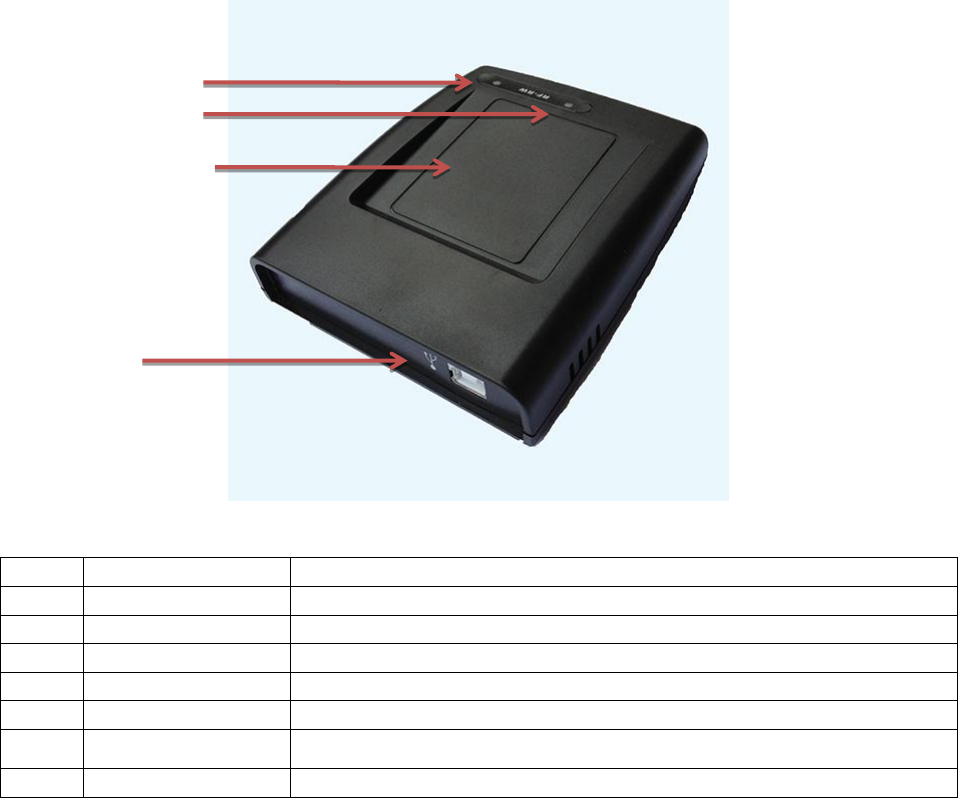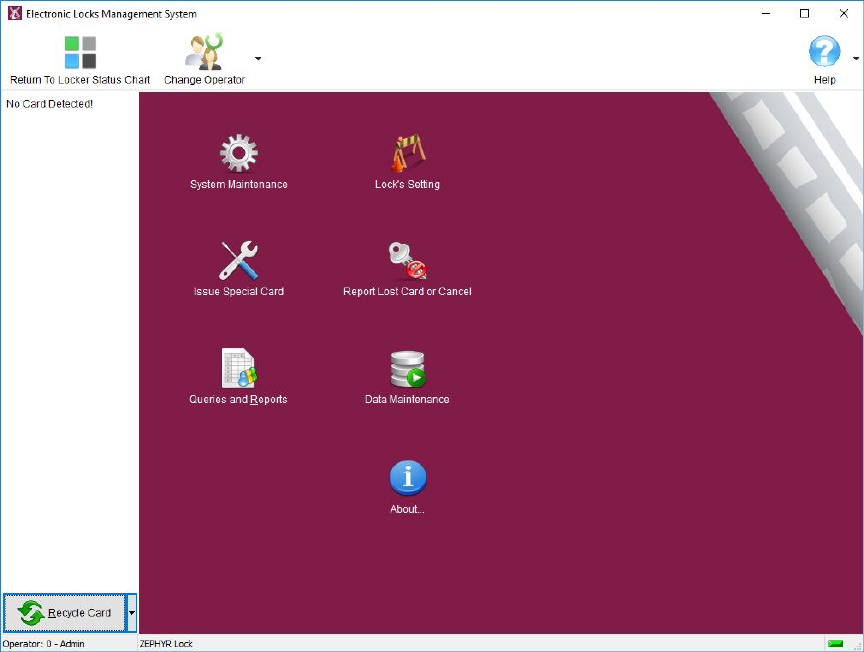Zephyrlock DP700 SMART CARD READER/WRITER FOR RFID SYSTEM User Manual
Zephyrlock,LLC SMART CARD READER/WRITER FOR RFID SYSTEM
User Manual

1
DP700S USER MANUAL
1. Summary
1.1 What are DP700S?
The DP700S card reader is an essential front-end processing device for developing IC
Card related products and system integration. Applications such as access control, identity
authentication, inquiries, stored value and other smart card management systems. It utilizes
13.56MHz communication frequency and conforms to the ISO14443 Type-A protocol. It supports
non-contact smart cards conforming to ISO14443 Type-A, such as: Mifare S50, Mifare S70,
MF1ICL10, Mifare Pro, Mifare Desfire, Mifare Ultralight, Hua Hong 1102, ETC.
Power Indicator
Communication
Status Indicator
RFID Cards Reading
Area
USB Port
1.2 RFID Card Types and Functions
Item
Card Types
Functions
1
User Card
This card can open registered locks only
2
Data Card
Read the open lock records and lock information
3
Time Change Card
Setup lock clock
4
Setup Card
Write preset information into lock
5
Management Card
Open any lock does not clear the registered card/password
6
Control Card
➊ Open any lock ➋ Clear registered card/password
7
Authorization Card
Authorize ELMS software and locks

2
1.3 Operation System Composition
Operation System consisted of PC based Electronic Lock Management System (ELMS) software and RFID
Card.
System Requirements:
* OS: Windows XP/Windows7/Windows8/ Windows10, UNIX and LINUX.
* Electronic Locks Management System (ELMS)
* USB A-B cable
2. Operating Steps
1. Connect the DP700S to the USB port of the computer via a USB cable. Plug-and-play USB2.0 (HID
Protocol), no need to install any drivers.
2. Run the ELMS software as shown in the photo below
3. Place cards on the DP700S and follow the prompts to perform the appropriate card operation.
3
FCC Information and Copyright
This equipment has been tested and found to comply with the limits for a Class B digital device, pursuant to part 15
of the FCC Rules. These limits are designed to provide reasonable protection against harmful interference in a
residential installation. This equipment generates uses and can radiate radio frequency energy and, if not installed
and used in accordance with the instructions, may cause harmful interference to radio communications. However,
there is no guarantee that interference will not occur in a particular installation. If this equipment does cause
harmful interference to radio or television reception, which can be determined by turning the equipment off and on,
the user is encouraged to try to correct the interference by one or more of the following measures:
—Reorient or relocate the receiving antenna.
—Increase the separation between the equipment and receiver.
—Connect the equipment into an outlet on a circuit different from that to which the receiver is connected.
—Consult the dealer or an experienced radio/TV technician for help.
FCC ID:XLY-DP700.
The device has been evaluated to meet general RF exposure requirement. The device can be used
In portable exposure condition without restriction.
15.19 Labelling requirements.
This device complies with part 15 of the FCC Rules. Operation is subject to the following two conditions:
(1) This device may not cause harmful interference, and
(2) This device must accept any interference received, including interference that may cause undesired operation.
Changes or modifications not expressly approved by the party responsible for compliance could void the user's
authority to operate the equipment.